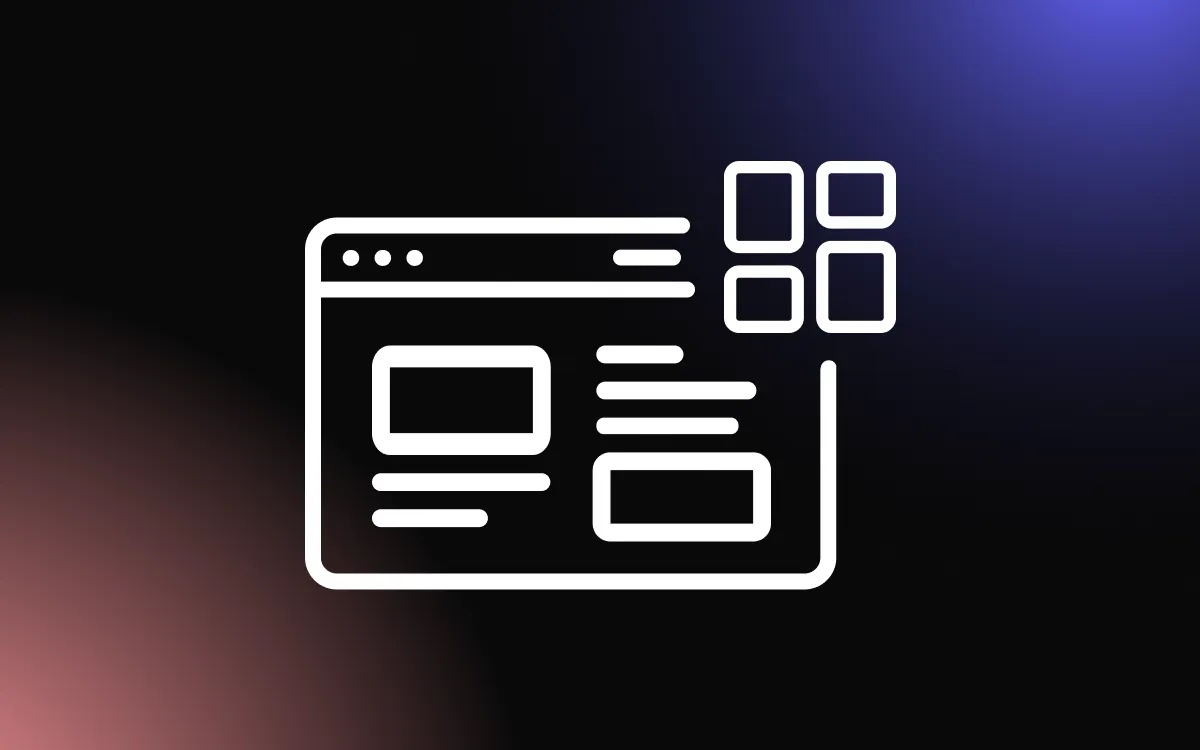
A website often serves as the initial touchpoint between a company and potential customers, functioning as an online storefront, ambassador, and customer service representative all in one. Consequently, a website's design holds immense significance, not only in attracting visitors but also in guiding their navigation, shaping their experiences, and ultimately influencing their conversion decisions.
This guide examines the intricate correlation between web design, user experience (UX), and conversions. We delve into the impact of various design elements and principles on user interaction and decision-making processes.
If you're an experienced web designer or a business owner aiming to optimize your website, this guide offers valuable insights to help you comprehend and harness the potency of web design.
Understanding User Experience (UX)

User Experience, often abbreviated as UX, is a term that has gained significant traction in the digital world. But what exactly is UX, and why is it so important?
What is User Experience?
User Experience, at its core, is about how a user interacts with, and responds to, a product or service. In the context of a website, UX encompasses all aspects of a user's interaction with the site, from the moment they land on the homepage, to the navigation process, to the action of clicking on a button or filling out a form.
It's about how easy or difficult it is to use the website, how intuitive the layout and navigation are, how quickly the pages load, and how satisfying the overall experience is. A good User Experience is smooth, intuitive, and enjoyable, leading the user to complete their desired actions with ease and satisfaction.
Elements of Good User Experience
Several elements contribute to a good User Experience. These include:
- Usability: The website should be easy to use and navigate. Users should be able to find what they're looking for without frustration.
- Design: The design should be visually appealing, professional, and consistent. It should reflect the brand's identity and make a positive impression on the user.
- Content: The content should be relevant, valuable, and easy to understand. It should meet the user's needs and expectations.
- Performance: The website should load quickly, and all features and functionalities should work as expected.
- Accessibility: The website should be accessible to all users, including those with disabilities. This includes proper use of color, font size, and alt text, among other things.
How Web Design Influences User Experience
Web design plays a crucial role in shaping the User Experience. The layout, color scheme, typography, images, and navigation all impact how a user interacts with the website.
For example, a well-structured layout with intuitive navigation makes it easy for users to find what they're looking for, enhancing the usability of the site. On the other hand, a cluttered layout with confusing navigation can frustrate users and lead them to leave the site.
Similarly, a visually appealing design can make a positive impression on users and encourage them to explore the site further, while a poor design can deter users. Therefore, when designing a website, it's important to consider not just the aesthetic aspects, but also how the design elements contribute to the overall User Experience.
Understanding Conversions

In the digital marketing landscape, the term "conversion" is frequently used. But what exactly is a conversion, and why is it so crucial for businesses?
What is a Conversion?
In the simplest terms, a conversion occurs when a website visitor completes a desired action. This could be anything from making a purchase, signing up for a newsletter, downloading a resource, filling out a form, or even clicking on a particular link.
The specific action that counts as a "conversion" will depend on the goals of the website or business. For an e-commerce store, a conversion might be a completed sale. For a blog, it might be a newsletter sign-up or a downloaded eBook. The conversion rate, then, is the percentage of website visitors who complete the desired action.
Different Types of Conversions
There are many different types of conversions, depending on the goals of the website or business.
Here are a few examples:
- Sales: This is perhaps the most straightforward type of conversion. When a website visitor makes a purchase, that's a conversion.
- Sign-ups: If a website's goal is to build an email list, then a conversion might be a user signing up for the newsletter.
- Downloads: For websites that offer resources like eBooks, whitepapers, or software, a download can count as a conversion.
- Form Submissions: If a website has a contact form or a survey, a form submission can be a conversion.
- Clicks: In some cases, a conversion might be as simple as a user clicking on a particular link or button.
Each of these conversions represents a user taking a desired action, bringing them one step closer to becoming a customer or achieving another goal of the business.
The Role of Web Design in Conversion Rate Optimization
Web design plays a significant role in Conversion Rate Optimization. The design of a website can influence a user's decision to take the desired action, whether that's making a purchase, signing up for a newsletter, or downloading a resource.
For example, a well-designed, easy-to-use checkout process can increase the conversion rate for sales. Similarly, a prominently displayed, visually appealing sign-up form can boost newsletter sign-ups. On the other hand, a poorly designed website can deter users and decrease conversions. Therefore, when designing a website, it's important to consider not just aesthetics, but also how the design influences user behavior and conversions.
Key Web Design Elements That Impact UX and Conversions

Creating a website that both provides an excellent user experience (UX) and drives conversions involves a careful consideration of various web design elements. These elements, from the layout and structure of the site to the typography used, all play a role in shaping how users interact with the site and whether they take the desired action.
Website Layout and Structure
The layout and structure of a website form the backbone of its user experience. A well-structured site allows users to navigate easily, find the information they're looking for, and understand what actions they can take.
For instance, a clear and logical layout with intuitive navigation guides users towards the desired action, be it making a purchase, signing up for a newsletter, or filling out a form. On the other hand, a poorly structured site can confuse and frustrate users, leading them to leave the site without converting.
Navigation and Menu Design
Navigation is another critical aspect of web design. A well-designed navigation menu helps users move through the site with ease, find the information they're looking for, and understand what actions they can take. It should be intuitive, easy to use, and consistent across all pages.
Conversely, a confusing or complicated navigation menu can frustrate users and deter them from exploring the site further, reducing the chances of conversion.
Typography and Readability
Typography plays a significant role in the readability of a website. The choice of fonts, sizes, colors, and spacing can impact how easily users can read and understand the content. Good typography enhances readability, making it easier for users to consume the content and take the desired action.
Poor typography, on the other hand, can make the content difficult to read and deter users, reducing conversions.
Best Practices for Designing for UX and Conversions

Designing a website that both delivers an excellent user experience (UX) and drives conversions is a delicate balancing act. It requires a deep understanding of your users, a clear vision of your conversion goals, and a strategic approach to design.
Creating a Clear and Intuitive Navigation
Navigation is a fundamental aspect of UX design. A clear and intuitive navigation system allows users to easily find the information they're looking for and understand what actions they can take. Some best practices for creating clear and intuitive navigation include:
- Keeping the navigation menu simple and concise: Avoid overwhelming users with too many options. Stick to the most important pages or categories.
- Making the navigation menu consistent across all pages: This helps users know where they are on the site and how to get to where they want to go.
- Using clear and descriptive labels: Avoid jargon or ambiguous terms. Make it easy for users to understand what each menu item leads to.
Designing for Readability
Readability is crucial for both UX and conversions. If users can't easily read and understand your content, they're unlikely to stay on your site or take the desired action. Some best practices for designing for readability include:
- Using clear and legible typography: Choose fonts and font sizes that are easy to read. Also, consider the line spacing and letter spacing to ensure the text doesn't feel cramped.
- Using contrast for text and background: Ensure there's enough contrast between the text and the background so that the text is easy to read.
- Breaking up large blocks of text: Use headings, subheadings, bullet points, and images to break up large blocks of text and make the content more digestible.
Using Colors and Images Strategically
Colors and images can greatly enhance the user experience and guide users towards conversion. However, they need to be used strategically.
Some best practices include:
- Using colors that align with your brand and evoke the right emotions: Different colors can evoke different emotions. Choose colors that align with your brand and the feelings you want to evoke in your users.
- Using high-quality, relevant images: Images can help convey your message more effectively and make your site more engaging. However, ensure the images are high quality and relevant to the content.
- Using images and colors to guide users towards the desired action: You can use colors and images to draw attention to key elements, such as call-to-action buttons or important information.
Ensuring Mobile-Friendliness
In today's digital age, a significant portion of web traffic comes from mobile devices. As such, ensuring your website is mobile-friendly is not just a nice-to-have, but a necessity. A mobile-friendly website not only provides a better user experience for mobile users but also improves your site's SEO and conversion rates.
Here are some key considerations:
- Responsive design: A responsive design automatically adjusts the layout and design of your site to fit different screen sizes. This ensures that your site looks and functions well on all devices, from desktops to smartphones.
- Touch-friendly navigation: On mobile devices, users interact with your site using touch, not a mouse. Make sure all interactive elements, like buttons and links, are large enough to be easily tapped.
- Fast load times: Mobile users often have slower internet connections, so it's crucial to optimize your site for speed. Compress images, minify code, and leverage browser caching to improve your site's load times on mobile.
Optimizing for Speed
Website speed is a critical factor in user experience and conversions. A slow-loading website can frustrate users, leading to higher bounce rates and lower conversions.
Here are some strategies to optimize your website for speed:
- Compress images: Large, high-resolution images can significantly slow down your site. Use image compression tools to reduce the file size of your images without compromising their quality.
- Minify CSS, JavaScript, and HTML: Minifying your code involves removing unnecessary characters (like spaces and line breaks), which can reduce the size of your files and improve load times.
- Use a Content Delivery Network (CDN): A CDN is a network of servers that deliver web content to users based on their geographic location. This can speed up content delivery and improve site performance.
Incorporating Clear Calls to Action
Calls to action (CTAs) guide users towards the actions you want them to take, from signing up for a newsletter to making a purchase. Clear, compelling CTAs are crucial for driving conversions.
Here are some tips for incorporating effective CTAs:
- Make your CTAs stand out: Use contrasting colors and large, legible text to make your CTAs stand out on the page.
- Be clear and specific: Tell users exactly what you want them to do. Instead of vague language like "Click here", use specific instructions like "Download our free guide".
- Position CTAs strategically: Place your CTAs in prominent, easy-to-find locations. This could be at the end of a blog post, in the header of your website, or in a pop-up window.
Tools and Resources for Web Design and Conversion Optimization

There is a variety of tools and resources that can help you design your website for optimal user experience and conversions. These tools can assist you in various aspects of web design and conversion optimization, from creating visually appealing layouts to analyzing user behavior and optimizing for conversions.
Web Design Tools
Web design tools can help you create a visually appealing and user-friendly website.
Here are some of the top web design tools in 2023:
- Adobe XD: Adobe XD is a vector-based tool for designing and prototyping user experience for web and mobile apps. It's part of Adobe's Creative Cloud suite.
- Sketch: Sketch is a vector graphics editor for macOS, used primarily for UI and UX design of websites and mobile apps.
- Figma: Figma is a cloud-based design tool that allows for real-time collaboration. It's used for designing websites, apps, or smaller components.
- InVision Studio: InVision Studio is a powerful tool for comprehensive design and prototyping.
- Webflow: Webflow is a web design tool that allows designers to build responsive websites without any coding.
User Experience Testing Tools
User experience testing tools can help you understand how users interact with your website and identify areas for improvement.
Here are some top user experience testing tools:
- Hotjar: Hotjar offers heatmaps, session recordings, and surveys to help you understand user behavior on your website.
- UsabilityHub: UsabilityHub allows you to run quick and simple usability tests with a large network of participants.
- UserTesting: UserTesting provides on-demand access to users for usability testing.
- Lookback: Lookback allows you to conduct remote user research with live video sessions.
- Optimizely: Optimizely offers A/B testing tools and user experience optimization.
Conversion Rate Optimization Tools
Conversion rate optimization tools can help you analyze user behavior and optimize your website for conversions.
Here are some top conversion rate optimization tools:
- Google Optimize: Google Optimize offers A/B testing, website testing & personalization tools for small & large enterprises to help deliver engaging customer experiences.
- Optimizely: Optimizely is a leading platform that offers a range of tools for A/B testing and personalization.
- Unbounce: Unbounce allows you to build, test, and optimize landing pages for better conversion rates.
- VWO: VWO is an A/B testing and conversion optimization platform that enables growing businesses to conduct qualitative and quantitative visitor research.
- Crazy Egg: Crazy Egg provides tools to record and analyze user behavior to improve your website design and conversion rate.
Conclusion
Web design is much more than just aesthetics. It's a potent tool that, when used effectively, can significantly enhance the user experience and drive conversions. From the layout and navigation to color schemes and typography, every design element plays a role in shaping the user's journey and influencing their decisions.
By understanding the principles of effective web design and the psychology of users, you can create a website that is not only visually appealing but also user-friendly and conversion-focused.
Remember, in the fast-paced digital world, user expectations and web design trends are constantly evolving. Therefore, it's important to keep learning, testing, and adapting your web design to meet the needs of your users and the goals of your business. With the insights and strategies outlined in this guide, you're now equipped to leverage the power of web design to enhance user experience and boost conversions. Happy designing!


